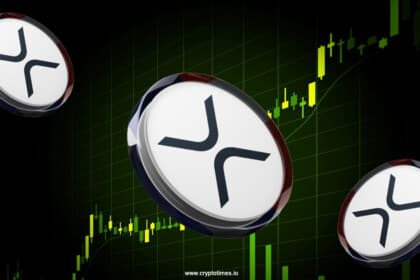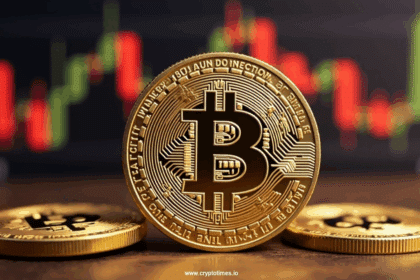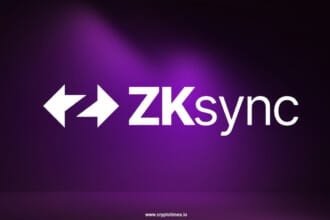In late 2021, the ConstitutionDAO project incurred approximately $1.5–$2.1 million in total Ethereum gas fees across tens of thousands of individual donations and refunds. The idea of a DAO, short for decentralized autonomous organization, was to give communities direct control over projects.
While theoretically, anyone with tokens had the right to vote and, therefore, influence outcomes, in practice, extremely high transaction costs meant only well-heeled players could afford full participation. The promise of decentralization-equal access, transparency, and community-driven governance runs into a harsh reality of money still shaping who has a voice.
These events illustrate a challenge facing blockchain governance. While transparency and participation sound appealing, taking part on-chain usually involves liquid finance, quietly shaping who can and cannot influence decisions.
On-chain governance was built on a dream of a digital form of self-government in which users could make decisions directly, independent of companies, executives, and foundation boards. Every vote would be public, every rule enforced by code, and every participant empowered by ownership.
It promised fairness and autonomy, but as DAOs grew, the cracks began to show with gas fees soaring, whales dominated the vote, and the very structure of participation was more expensive and less inclusive.
The visible promise
In the early days of decentralized finance (DeFi), governance was viewed as a bold test of community decision-making. In April 2020, Compound Finance made headlines when it gave its users full control of its lending platform through a token called COMP.
Before this change, the Compound team still had special “admin keys” that let them change or update the system. By giving that power to token holders instead, the project showed that control could move from the developers to the wider community.
This change, apart from the technical update, showed how blockchain could remove central control and let users collectively manage a platform. For many in crypto, it was a practical version of “governance by the people.”
However, this new structure also brought challenges. Running a system governed by many participants introduced significant costs and complexities that were becoming difficult to overlook.
Hidden cost 1: Economic inefficiency
While on-chain voting gives the user a direct voice, it introduces heavy economic inefficiencies. Researchers have pointed out that during popular votes, costs spike dramatically. During any time when many users are voting, gas fees surge across the entire network.
A study conducted by ETH Zurich in 2022 found that blockchain platform voting can get extremely expensive during busy moments in the network. In 2021, the launch of the Ethereum Name Service saw thousands of users rush to vote and delegate at the same time. This caused community members to spend millions of dollars just to cast their votes due to a spike in gas fees.
But the inefficiency does not stop there. Holding governance tokens ties up capital that could be generating returns somewhere else. To DeFi users, capital efficiency is everything. Locking up tokens simply to vote means forgoing staking, farming, or lending opportunities.
As of November 2025, the average gas fee cost to pass a single on-chain governance proposal in major DAOs is typically in the low hundreds to low thousands of USD across aggregated voter transactions—far below $87,000—thanks to widespread Layer 2 adoption.
This reveals a hard reality despite the recent improvement. Even when decisions are made democratically, the process can drain money that might otherwise have been used to develop or expand the project.
Hidden cost 2: Voter apathy and plutocracy
If high operating costs strain DAOs financially, then voter apathy and unequal voting power strain them socially. In theory, every token holder can take part in decisions. In reality, most people stay silent.
As noted in research by ETH Zurich, 17 out of 21 DAOs had fewer than ten wallet addresses having enough voting power to decide outcomes on their own. On the surface, these organizations appear decentralized. But in practice, a small group often controls the results.
Delegation systems can make this imbalance even sharper. Delegates are supposed to represent the community, but many end up speaking for large token holders instead. One researcher called it “a plutocracy with good branding.” That is, decision-making often represents wealth, not broad participation.
The gap is easy to see in major DAOs. For example, in Lido, a single large holder can hold as much voting power as thousands of smaller participants combined. What is presented as community governance can easily become rule by a few.
Apathy increases this divide. Many token holders don’t vote or delegate at all. Some avoid participating because gas fees are high; others simply find the process confusing or time-consuming. Yet every vote, token transfer, or delegation still requires on-chain transactions that cost money. Even those who decide not to participate add to the inefficiencies of the system.
Although the ultimate goal of DAOs is to share decision-making, power sometimes concentrates among the biggest holders. The influence is not decentralized, even though the infrastructure is.
Hidden cost 3: Security and attack surface
Decentralized governance also introduces new types of risk. Beanstalk Farms, an Ethereum-based stablecoin protocol, learned this the hard way a few years back. The Ethereum-based stablecoin protocol was exploited for $182 million on April 18, 2022.
Security firm PeckShield reported that the attacker took out a flash loan on Aave, bought a massive amount of Beanstalk’s native governance token (stalk), and used that temporary voting power to pass a malicious proposal. Within two hours, all protocol funds were drained into a private wallet.
The attacker later laundered the funds through Tornado Cash, which hides transaction sources. Beanstalk’s smart contracts had been audited by Omnicia, but the audit occurred before the flash loan exploit was introduced.
This incident revealed a difficult truth. The openness that lets everyone participate in governance can also be exploited. Attackers can exploit the governance structure itself rather than looking for holes in the code. In this instance, the attack was carried out using the democratic process itself.
Hidden cost 4: Decision paralysis
Another hidden cost is mental energy. As they expand, DAOs create more proposals than most of their members can realistically keep track of. Some of the biggest DAOs review more than 100 proposals every year; many participants are overwhelmed, and their ability to stay engaged is curtailed.
This results in what researchers call “analysis paralysis.” Members are overwhelmed, which leads to hurried or uninformed votes. While the ideals of DAOs center on participation, the reality is that only a small core seriously reviews proposals, with the rest either skipping votes or relying exclusively on delegates.
To reduce friction, many DAOs have implemented off-chain voting systems such as Snapshot. This allows members to vote without having to pay gas fees. However, off-chain systems only offer temporary relief-they don’t solve the deeper problem of decision overload.
Delegation mechanisms can help, but they introduce their own risk; over-reliance on delegates amplifies centralization. The same few individuals end up making most decisions, turning governance into a de facto representative model—a far cry from what DAOs are supposed to avoid.
The main design challenge remains how to balance participation, efficiency, and decentralization. DAOs risk collapsing under their own democratic weight without reform.
Experimenting with efficiency
Some initiatives are experimenting with novel approaches to governance in order to address these issues. Every strategy aims to strike a balance between cost, participation ease, and fairness, but none of them addresses every issue at once.
One concept is derived from two-step voting systems used by Layer 2 networks such as Optimism. One group verifies that a proposal satisfies fundamental standards, while another verifies if the plan is supported by the larger community. This keeps a small number of powerful people from having complete influence over all decisions. However, it also makes the process more difficult for regular participants to comprehend.
Futarchy, an idea that gained attention through Solana’s MetaDAO, takes community decision-making in a different direction. Instead of people voting “yes” or “no” on proposals, participants place bets on which option they think will lead to better results. The system then uses those predictions to decide which proposal the community should follow.
Projects like Sanctum and Jito have experimented with this model. This gives the smaller guys an opportunity to participate without having to invest a lot, as even the smallest bets can be counted as participation. However, making and maintaining such prediction markets does take a lot of time, technical set-up, and gas fees that pile up pretty fast.
A new model of governance has emerged that combines open discussion off-chain with on-chain voting for the final decision. This allows community members to discuss and debate ideas among themselves first, prior to any formal decision. Although this approach helps people make more considered decisions, it also can make the process less transparent and harder to coordinate.
Through all these experiments, the same challenge keeps appearing. DAOs have to balance letting everyone participate with getting things done efficiently. Studies from Solana and Ethereum-based DAOs show that while Futarchy and hybrid approaches can increase engagement, most communities still rely on token-weighted voting because it is simpler and less expensive.
The price of participation
On-chain governance is not free. Every vote, delegation, and discussion comes with real costs—financial, social, and technical. The idea of community-led decision-making is still compelling, but without careful planning, it can collapse under its own complexity.
For DAOs to function well, governance needs to be treated like a real budget item. The costs of participating, whether its gas fees, time, or effort, must be considered and managed just like any other expense.
Decentralization was never meant to be inexpensive. However, governance may be made safer and easier to participate in with improved design. That way, real control stays with the whole community—not just with people who can afford the high costs.
Also Read: Crypto: The New Tool to Dodge Sanctions?











